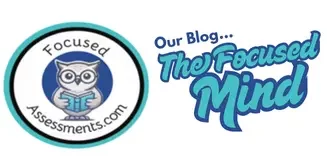The Hidden Complexity of Neurodiversity: What Parents Need to Know
Navigating the world of neurodiversity can feel like piecing together a complex puzzle, especially when neurodevelopmental conditions overlap, creating a unique picture for each individual. As a seasoned diagnostician from Denton, Texas, I’ve worked with countless families who initially faced what seemed like a singular learning or behavioral challenge, only to uncover a more intricate scenario involving co-occurring diagnoses such as ADHD and dyslexia or dyscalculia and autism spectrum disorder. This complexity might seem daunting at first, but understanding these overlapping conditions is crucial for providing practical support and educational strategies. In this post, we’ll delve into the hidden layers of neurodiversity, offering insights and guidance for parents, educators, and specialists who are on this journey. Whether you’re in Flower Mound, Texas, or beyond, know that you’re not alone, and there’s a wealth of resources and support available to help you and your child thrive.
Understanding Neurodevelopmental Conditions
Neurodevelopmental conditions are complex and often interconnected, presenting unique challenges for individuals, families, and educators. This section explores the complexities of these conditions and their intersections, providing a multifaceted perspective on neurodiversity.
Navigating Complex Diagnoses
Neurodevelopmental conditions rarely exist in isolation. Many individuals find themselves navigating a complex web of interconnected diagnoses, each influencing the others in subtle yet significant ways.
For instance, a child initially diagnosed with ADHD might later show signs of dyslexia or autism spectrum disorder. This complexity can be overwhelming for both parents and educators.
Understanding these overlaps is crucial for providing adequate support. It’s not just about addressing individual symptoms, but also about recognizing how different conditions interact and influence one another.
Research shows that early identification and intervention can significantly improve outcomes. However, the interplay between conditions often requires a nuanced approach to diagnosis and treatment.
Recognizing Overlapping Symptoms
Identifying overlapping symptoms in neurodevelopmental conditions can be challenging, as many share similar characteristics. For example, difficulties with focus could stem from ADHD, anxiety, or even sensory processing issues.
It’s essential to look at the whole picture rather than focusing on isolated behaviors. A child struggling with math might have dyscalculia, but could also be dealing with anxiety or ADHD that impacts their ability to concentrate.
Professionals in North Texas often use comprehensive assessments to tease apart these overlapping symptoms. This might include cognitive tests, behavioral observations, and input from various specialists.
Parents and educators play a crucial role in this process by providing detailed observations of the child’s behavior across different settings and situations.
Co-occurrence in Neurodevelopmental Conditions
Co-occurrence, or comorbidity, is a common phenomenon in neurodevelopmental conditions. Understanding these overlaps is crucial for accurate diagnosis and the development of effective support strategies.
Common Overlaps Explained
ADHD and dyslexia frequently co-occur, with studies suggesting up to 40% of individuals with ADHD also have dyslexia. This overlap can complicate both learning and behavior management.
Autism spectrum disorder often coincides with other conditions. For instance, many individuals with autism also experience anxiety disorders or ADHD, which can exacerbate social and communication challenges.
Dyscalculia, a specific learning difficulty in math, can overlap with dyslexia or ADHD. This combination might manifest as struggles with both number sense and reading comprehension.
Understanding these common overlaps helps in developing more targeted and effective intervention strategies.
Challenges in Diagnosis and Support
Diagnosing co-occurring neurodevelopmental conditions presents unique challenges. Symptoms of one condition may mask or mimic another, leading to potential misdiagnosis or incomplete treatment plans.
For example, a child with both ADHD and anxiety might be mistakenly treated for ADHD alone, overlooking the underlying anxiety that exacerbates attention issues.
Adequate support requires a holistic approach, addressing all aspects of an individual’s neurodiversity. This often involves collaboration between various specialists, including psychologists, speech therapists, and occupational therapists.
Parents and educators need to be aware of these challenges to advocate effectively for comprehensive assessments and tailored support strategies.
Strategies for Parents and Educators
Empowering parents and educators with practical strategies is crucial for supporting individuals with co-occurring neurodevelopmental conditions. This section examines practical strategies for establishing supportive environments and accessing essential resources.
Building a Supportive Environment
Creating a supportive environment is crucial for individuals with co-occurring neurodevelopmental conditions. This involves understanding their unique needs and adapting surroundings accordingly.
At home, establish consistent routines and clear expectations to promote a stable environment. Utilize visual schedules and reminders to enhance organization and time management.
In the classroom, consider flexible seating options and minimize distractions to promote a more engaging learning environment. Implement multi-sensory learning approaches to cater to different learning styles and strengths.
Encourage open communication between home and school to ensure consistency in support strategies and services. Regular check-ins can help identify what’s working and what needs adjustment.
Remember, a supportive environment is not just about physical spaces but also about fostering understanding and acceptance among peers and family members.
Accessing Resources and Assessments
Navigating the world of assessments and resources can be overwhelming. Start by consulting with your child’s pediatrician or school counselor for initial guidance.
Look for local support groups or online communities focused on neurodevelopmental conditions. These can be invaluable sources of information and emotional support.
Consider seeking comprehensive neuropsychological evaluations to get a clear picture of your child’s strengths and challenges. These assessments can guide tailored intervention strategies.
Don’t forget to explore educational resources in your area. Many schools offer specialized programs or accommodations for students with neurodevelopmental conditions.
Remember, early intervention is key. The sooner you access appropriate resources and assessments, the better equipped you’ll be to support your child’s unique needs.

Mona White is an educator and diagnostician in Denton with over 30 years of experience in Learning Disabilities Testing. As a mother of two neurodiverse sons—one with ADHD and one with Dyslexia—she brings both personal insight and professional expertise to every evaluation. Having navigated public, private, and homeschool education, Mona understands the unique challenges families face. Her approach is compassionate, thorough, and tailored to support lasting success for children and adults alike.

